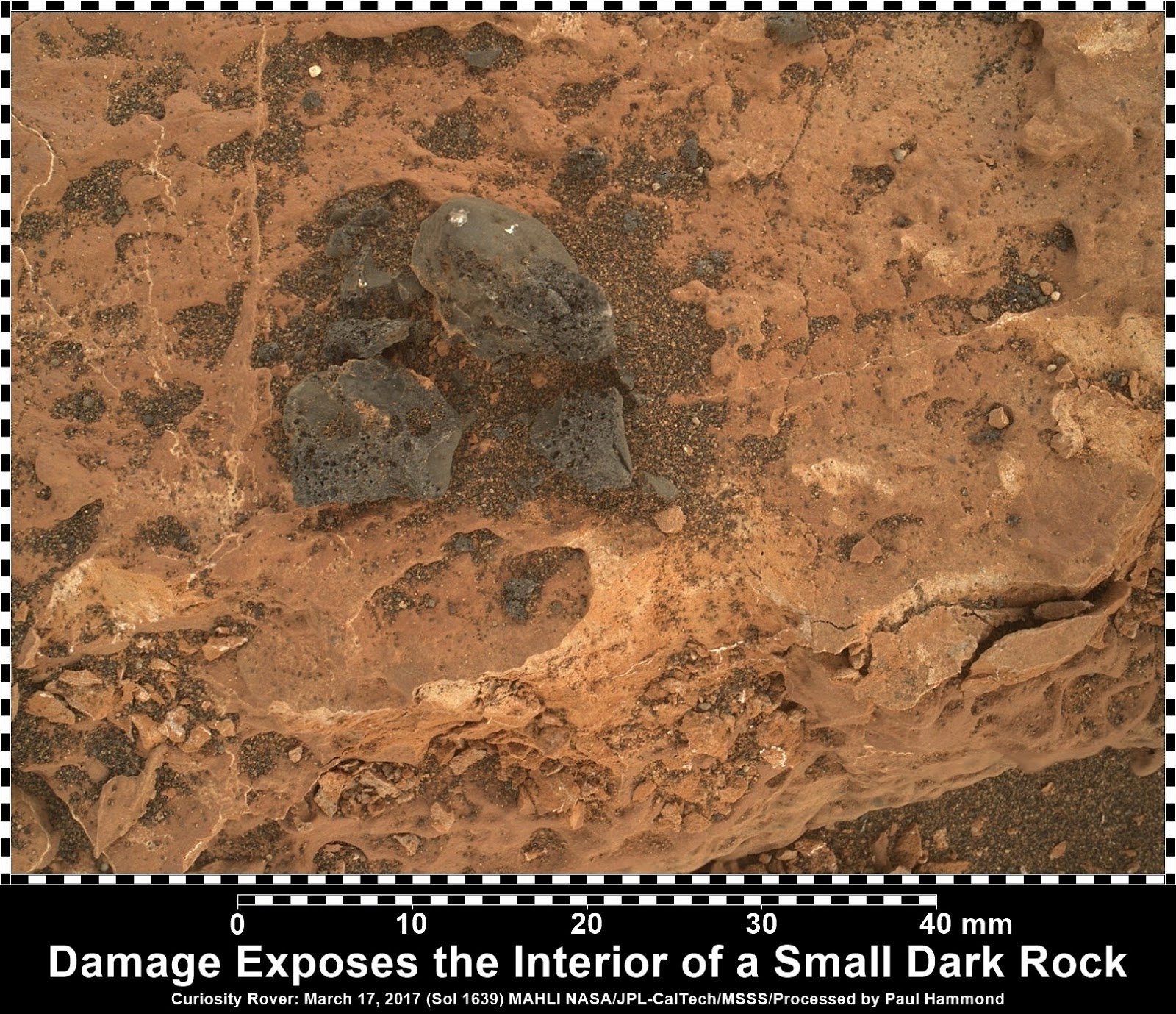

| Online: | |
| Visits: | |
| Stories: |

| Story Views | |
| Now: | |
| Last Hour: | |
| Last 24 Hours: | |
| Total: | |
NASA Challenged by This Rock.
Monday, March 20, 2017 1:59
% of readers think this story is Fact. Add your two cents.
This post is outdated. Updated version:
The cm-sized dark rock at the center is problematic because it is not a natural rock, but an artificial rock. This rock challenges the theory of geologists about the rocks in Gale Crater, Mars.
First of all, no geologists think it is a sedimentary rock, since it contains many holes. Some people think it is an igneous rock because it is dark in color and contains many holes. The problem is: how can an igneous rock be here? It cannot have come from volcano or meteorite impact, as it is hundreds of kilometers away from any known sites of volcano or meteorite impact. Martian wind cannot move it here from far away. The answer to the problem lies in the larger rock it sits on. NASA’s Mars rover Curiosity crushed the lower edge of the larger rock, thus exposing the complex structure in the interior of an artificial rock. So, both rocks should be artificial rocks.
Image source: https://www.flickr.com/photos/105796482@N04/33365889822/sizes/o
See also: photos and posts on artificial rocks:



